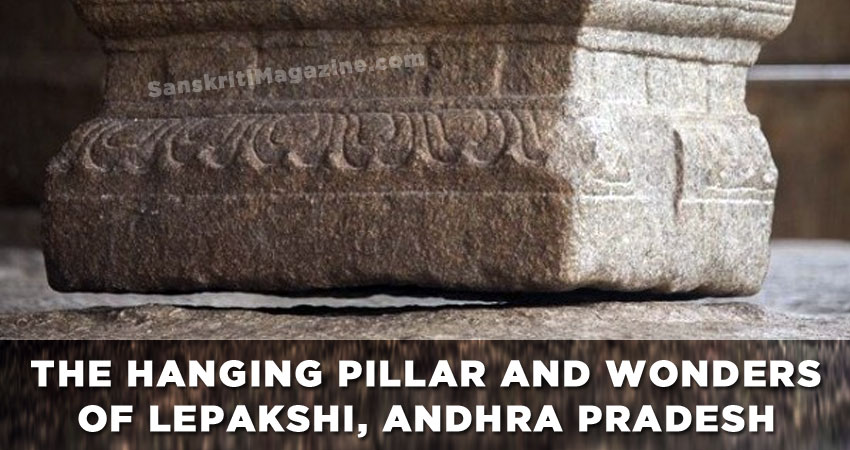It is hard to imagine that Kashmir, one of the most beautiful places on earth, inhabited by a peaceful populace, can become the bone of contention between two countries. There is no doubt that Kashmir became a “disputed territory” only because self-aggrandizing politicians tried to divide the region on the basis of religion. In fact, the main reason behind of the constant strife between India & Pakistan is more political than religious.
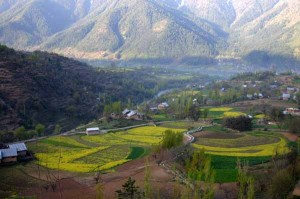 Kashmir: A Quick Glance
Kashmir: A Quick Glance
Kashmir, a 222,236 sq km region in the northwestern Indian subcontinent, is surrounded by China in the northeast, the Indian states of Himachal Pradesh and Punjab in the south, by Pakistan in the west, and by Afghanistan in the northwest. The region has been dubbed “disputed territory” between India and Pakistan since the partition of India in 1947. The southern and southeastern parts of the region make up the Indian state of Jammu and Kashmir, while the northern and western parts are controlled by Pakistan. A border called the Line of Control (agreed to in 1972) divides the two parts. The eastern area of Kashmir comprising the northeastern part of the region (Aksai Chin) came under the control of China since 1962. The predominant religion in the Jammu area is Hinduism in the east and Islam in the west. Islam is also the main religion in the Kashmir valley and the Pakistan-controlled parts.
Kashmir: A Shared Haven for Hindus & Muslims
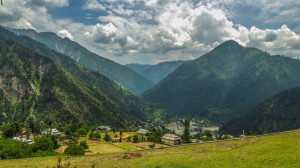
It may seem that the history and geography of Kashmir and the religious affiliations of its people present an ideal recipe for bitterness and animosity. But it is not so. The Hindus and Muslims of Kashmir have lived in harmony since the 13th century when Islam emerged as a major religion in Kashmir. The Rishi tradition of Kashmiri Hindus and Sufi-Islamic way of life of Kashmiri Muslims not only co-existed, they complemented each other and also created a unique ethnicity in which Hindus and Muslims visited the same shrines and venerated the same saints.
In order to understand the Kashmir crisis, let’s take a quick look at the history of the region.
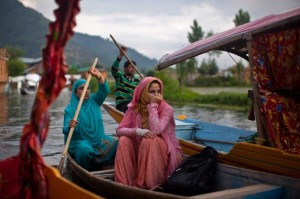
A Brief History of Kashmir
The splendor and salubriousness of the Kashmir valley is legendary! In the words of the greatest of the Sanskrit poets Kalidas, Kashmir is “more beautiful than the heaven and is the benefactor of supreme bliss and happiness.” Kashmir’s greatest historian Kalhan called it the “best place in the Himalayas” – “a country where the sun shines mildly…” The 19th century British historian Sir Walter Lawrence wrote about it: “The valley is an emerald set in pearls; a land of lakes, clear streams, green turf, magnificent trees and mighty mountains where the air is cool, and the water sweet, where men are strong, and women vie with the soil in fruitfulness.”
How Kashmir Got Its Name
Legends have it that Rishi Kashyapa, the saint of antiquity, reclaimed the land of the Kashmir valley from a vast lake, known as “Satisar”, after goddess Sati, the consort of Lord Shiva. In ancient times, this land was called “Kashyapamar” (after Kashyapa) that later became Kashmir. The ancient Greeks called it “Kasperia,” and the Chinese pilgrim Hiun-Tsang who visited the valley in the 7th century AD, called it “Kashimilo.”
Kashmir: A Major Hub of Hindu & Buddhist Culture
The earliest recorded history of Kashmir by Kalhan begins at the time of the Mahabharata war. In the 3rd century BC, emperor Ashoka introduced Buddhism in the valley. Kashmir became a major hub of Hindu culture by the 9th century AD. It was the birthplace of the Hindu sect called Kashmiri ‘Shaivism’, and a haven for the greatest Sanskrit scholars.
Kashmir under Muslim Invaders
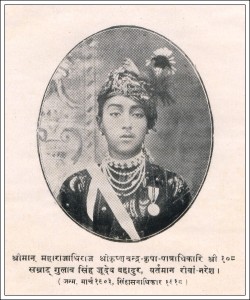
Several Hindu sovereigns ruled the land until 1346, the year of the advent of Muslim invaders. During this time, a multitude of Hindu shrines were destroyed, and Hindus were forced to embrace Islam. The Mughals ruled Kashmir from 1587 to 1752 – a period of peace and order. This was followed by a dark period (1752-1819), when Afghan despots ruled Kashmir. The Muslim period, which lasted for about 500 years, came to an end with the annexation of Kashmir to the Sikh kingdom of Punjab in 1819.
Kashmir under Hindu Kings
The Kashmir region, in its present form, became a part of the Hindu Dogra kingdom at the end of the First Sikh War in 1846, when, by the treaties of Lahore and Amritsar, Maharaja Gulab Singh, the Dogra ruler of Jammu, was made the ruler of Kashmir “to the eastward of the River Indus and westward of the River Ravi.” The Dogra rulers – Maharaja Gulab Singh (1846 to 1857), Maharaja Ranbir Singh (1857 to 1885), Maharaja Pratap Singh (1885 to 1925), and Maharaja Hari Singh (1925 to 1950) – laid the foundations of the modern Jammu & Kashmir state. This princely state lacked a definite boundary until the 1880s, when the British delimited boundaries in negotiations with Afghanistan and Russia. The crisis in Kashmir began immediately after the British rule ended.
After the British withdrew from the Indian subcontinent in 1947, territorial disputes over Kashmir started brewing. When India and Pakistan were partitioned, the ruler of the princely state of Kashmir was given the right to decide on whether to merge with either Pakistan or India or remain independent with certain reservations.
After a few months of dilemma, Maharaja Hari Singh, the Hindu ruler of a predominantly Muslim state, decided to sign an Instrument of Accession to the Indian Union in October 1947. This enraged the Pakistani leaders. They attacked Jammu & Kashmir as they felt that all areas of India with Muslim majority should be under their control. Pakistani troops overran most of the state and the Maharaja took refuge in India.
India, wanting to confirm the act of accession and defend its territory, sent troops to Kashmir. But by then Pakistan had captured a considerable chunk of the region. This gave rise to a localized warfare that continued through 1948, with Pakistan retaining control of a large area of the state, but India keeping a larger part.
The Indian Prime Minister Jawaharlal Nehru soon declared a unilateral ceasefire and called for a plebiscite. India filed a complaint with the UN Security Council, which established the United Nations Commission for India and Pakistan (UNCIP). Pakistan was accused of invading the region, and was asked to withdraw its forces from Jammu & Kashmir. The UNCIP also passed a resolution stating:
“The question of accession of the state of Jammu & Kashmir to India or Pakistan will be decided through the democratic method of free and impartial plebiscite”.
However, this could not take place because Pakistan did not comply with the UN resolution and refused to withdraw from the state. The international community failed to play a decisive role in the matter saying that Jammu & Kashmir is a “disputed territory”. In 1949, with the intervention of the United Nations, India and Pakistan defined a ceasefire line (“Line of Control”) that divided the two countries. This left Kashmir a divided and disturbed territory.
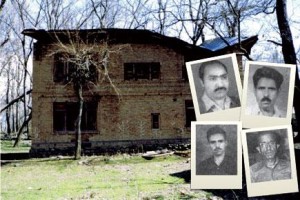
In September 1951, elections were held in the Indian Jammu & Kashmir, and National Conference under the leadership of Sheikh Abdullah came to power, with the inauguration of the Constituent Assembly of the State of Jammu & Kashmir.
Warfare again broke out between India and Pakistan in 1965. A cease-fire was established, and the two countries signed an agreement at Tashkent (Uzbekistan) in 1966, pledging to end the dispute by peaceful means. Five years later, the two again went to war that resulted in the creation of Bangladesh. Another accord was signed in 1972 between the two Prime Ministers – Indira Gandhi and Zulfiqar Ali Bhutto – in Simla. After Bhutto was executed in 1979, the Kashmir issue once again flared up.
During the 1980s, massive infiltrations from Pakistan were detected in the region, and India has since then maintained a strong military presence in Jammu & Kashmir to check these movements along the cease-fire line. India says that Pakistan has been stirring up violence in its part of Kashmir by training and funding “Islamic guerrillas” that have waged a separatist war since 1989 killing tens of thousands of people. Pakistan has always denied the charge, calling it an indigenous “freedom struggle.”
In 1999, intense fighting ensued between the infiltrators and the Indian army in the Kargil area of the western part of the state, which lasted for more than two months. The battle ended with India managing to reclaim most of the area on its side that had been seized by the infiltrators.
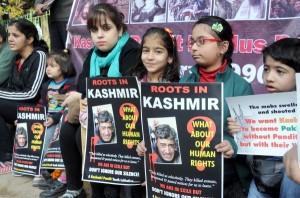
In 2001, Pakistan-backed terrorists waged violent attacks on the Kashmir Assembly and the Indian Parliament in New Delhi. This has resulted in a war-like situation between the two countries. However, India’s influence right wing Hindu nationalist organization Rashtriya Swayamsevak Sangh (RSS) surprised everyone by not giving any call for war with Pakistan. Marking a clear distinction between “Islamist” forces and “Islamic” traditions, it said that Pakistan cannot yet be bracketed with countries like Sudan or Taliban Afghanistan, which supports Islamic terrorism, “even though there are forces in that country, which do like to use Islamic terrorism for political ends.” In 2002, India and Pakistan started massing troops along the border, almost cut down diplomatic ties and transport links, fuelling fears of a fourth war in 50 years.
Even at the end of the first decade of the new millennium, Kashmir continues to burn – torn between internal clashes among factions with divergent viewpoints about the future of the state and external rivalry between the two nations that claim Kashmir is theirs. It is high time, the leaders of India and Pakistan make a clear choice between conflict and cooperation, if they want its people to live in peace.
~ Subhamoy Das




